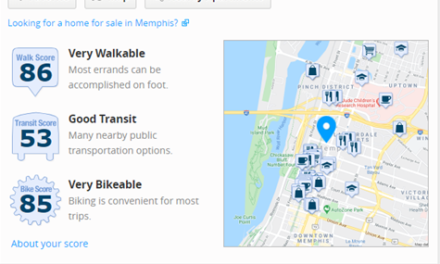Maybe, with a little luck, the Downtown Memphis Commission – through its affiliate organization, the Center City Revenue Finance Corporation – is ushering in a new era for PILOTs in Memphis and Shelby County.
We can only hope.
Long ago, tax freezes here moved from being incentives to being entitlements. If Memphis and Shelby County were a casino, it would have had the loosest slots anywhere. After all, in one 10-year period, more than 400 PILOTs (payment-in-lieu-of-taxes) were approved here, greater than the rest of Tennessee combined.
Despite lack of funds for city and county services – which are generally underfunded (except for cops, courts, and corrections) when compared to other similarly sized communities and constant complaining by business about high taxes, resistance to any changes in PILOT policies have been adamantly rebuffed despite the fact that over the past 10 years, PILOTs have waived about $750 million in city and county taxes, or the equivalent of about 55 cents on the cumulative property tax rate.
Bait and Switch
It’s what led the Tennessee Comptroller to include the overuse of PILOTs in his letter to City of Memphis in 2013 about financial discipline, saying the tax freezes “cut into future property tax revenue growth.” That followed criticism of the program by Forbes magazine, George Mason University, and even consultants hired by Memphis and Shelby County.
Such is the allure of the tax freezes and our overreliance on them.
When the PILOT policy was put in place about 30 years ago, it was designed to be temporary. The plan was for tax freezes to prime the economic pump in the short term while the structural issues were improved for long-term success. And yet, over those three decades, we did little work on the structural issues because it was so much easier to simply waive taxes.
As for downtown, it was said back then that PILOTs would only be given until downtown was able to stand on its own feet. Of course, downtown PILOTs were always different than the ones approved by the Industrial Development Board of Memphis and Shelby County, because the downtown variety was in effect freezing in place property taxes that were rapidly declining.
A few years ago, we wrote that the Downtown Memphis Commission’s annual report continued to point out the extremely high occupancy rates for downtown residential units, leading us to question the need for the continuation of existing PILOT policies by the Center City Revenue Finance Corporation for these projects. It seemed that finally, the market was sending a message that it was stronger, that PILOTs deserved a new look, and that the incentives should now be concentrated on the core rather than its extremities.
A Step Forward
Here’s the thing: as we wrote that, we assumed it amounted to wishful thinking. After all, the forces protecting PILOTs are unyielding and influential, and in truth, the reality of downtown still falls short of our hyperbole about it.
And yet, Downtown Memphis Commission did in fact begin to take a new look at its PILOT policies as it relates to hotels, and in so doing, it is making sure they are being approved in more targeted, strategic ways that have real impact.
First, the Center City Revenue Finance Corporation (CCRFC) shifted gears from giving tax freezes to anyone who promised to open any kind of hotel downtown to reserving them for the kinds of hotels that are needed to expand the convention business – full-service, large hotels, preferably within easy access of the Memphis Cook Convention Center.
Memphis has been playing the chicken and egg for years. The convention business here was suffering because the convention center was badly outdated, so it was improved to the tune of $92 million, but then, the convention business was said to be suffering because there weren’t enough adjacent hotels rooms, so the Marriott (now the Sheraton) was expanded, but then, the improvements to the convention center didn’t have enough impact so $57 million in improvements, especially to the exterior, are planned to make it more attractive.
One Step Ahead, One Step Back
Memphis has significantly more full-service hotel rooms downtown – think a hotel with 1,000 rooms or a couple of hotels with 700 rooms or so. Today, the Sheraton’s 603 rooms make it the only hotel downtown with more than 500 rooms (the Peabody has 464, the Westin has 203, and the Madison has 110 rooms).
Meanwhile, limited service smaller hotels proliferate, but do little to nothing to support a stronger convention industry here. As a result, the CCRFC is aligning its tax freezes with the priorities of the Memphis Convention & Visitors Bureau to bolster Memphis’ convention business.
With PILOTs, however, it’s often one step ahead, one step back, as most recently demonstrated by the new “Fast Track” PILOT policy passed by EDGE in May. While showing courage on the hotel front, CCRFC loosened up policies that could lead to more PILOTs outside of downtown, a change that bears close monitoring during its three-year trial period.
Since the first years of the Center City Commission, now the Downtown Memphis Commission, there has been this urge to work on a larger palette than just downtown. We’ve understood the urge, because the adjacent neighborhoods crave attention too. That said, it’s always seemed to us that based on the overall condition of the core, the CCRFC shouldn’t take its eyes off the ball. If the core were more vibrant and successful, we would have less concern, but it seems that we always find a way to avoid tackling the really tough but vital objective: to improve and activate the core.
CCRFC Policy Changes
We understand and support policies, programs, and projects that bring residents back to the inner city, but that seems more appropriately a community development function than a downtown development one. In addition, with the soon-to-be launched comprehensive plan, it would be helpful to align incentives of all types with its recommendations and priorities.
Years ago, boundaries were expanded by the CCRFC to the Medical Center and midtown, but PILOTs were reserved for “high impact” projects. As a result, they were few and far between. That “high impact” descriptor has now been removed by the CCRFC, but hopefully, it doesn’t open the door to a flood of new tax freezes. After all, if the market is telling us anything, it is in particular saying that midtown can stand on its own feet.
If there’s good news about the change in policy, it is that it provides for a shorter time period for PILOTs for non-downtown projects – eight years compared to 15 years – and closing costs are one percent higher than they are for downtown.
Most of these changes aren’t spelled out on the Downtown Commission’s website.
EDGE Shines A Light
In that vein, we’re hard-pressed to think of an industrial development board like EDGE that is more transparent in its work. Whether you like PILOTs or hate them, EDGE deserve kudos for responding to concerns with a policy of complete disclosure. We know of no government agency here, or anywhere else, for that matter, that does more to shine a light on its work. To its credit, everything is out there, including how much in taxes are being waived, the detailed profile of the project, and even the legal documents for the deal.
In fact, the CCRFC could take some lessons from EDGE in this regard.
In the meantime, we can only hope that the downtown development agency continues to connect its tax freezes with targeted priorities like full-service hotels and to complement the work of a partner agency like the Convention & Visitors Bureau.
As we have said from our first posts about PILOTs 11 years ago, we’re not for unilateral disarmament, but at least let’s have a nuclear policy that reserves them for the times when they are pivotal and for the projects that are transformational.
***
Join us at the Smart City Memphis Facebook page for daily articles, reports, and commentaries that are relevant to Memphis.





Progress??? Wishful thinking about hotel rooms and conventions and tourism. Downtown has mostly very mediocre hotels. The poor old Peabody just waffles along. Memphis needs very large luxury hotels in order to attract conventions. More than anything Memphis needs a new convention center.
The renovations and upgrades to the Cook Convention Center are never going to make a difference. It’s like putting lipstick on a pig. Memphis will never ever be able to compete with cities like Nashville, Atlanta and New Orleans. Nashville has the massive Music City Center and thousands of high end new hotel rooms. Memphis is not even close to bring in their league regardless of how many PILOTS we hand out.
The very best move Memphis can make is to fire Kevin Kane and his bunch of good ole boy cronies at the CVB
New hotel rooms and a largely new convention center moves Memphis up to second tier – which just happens to be the same tier Nashville is on.
Memphis should find its own unique niche and fill it. Copying some other city is the wrong road to take.